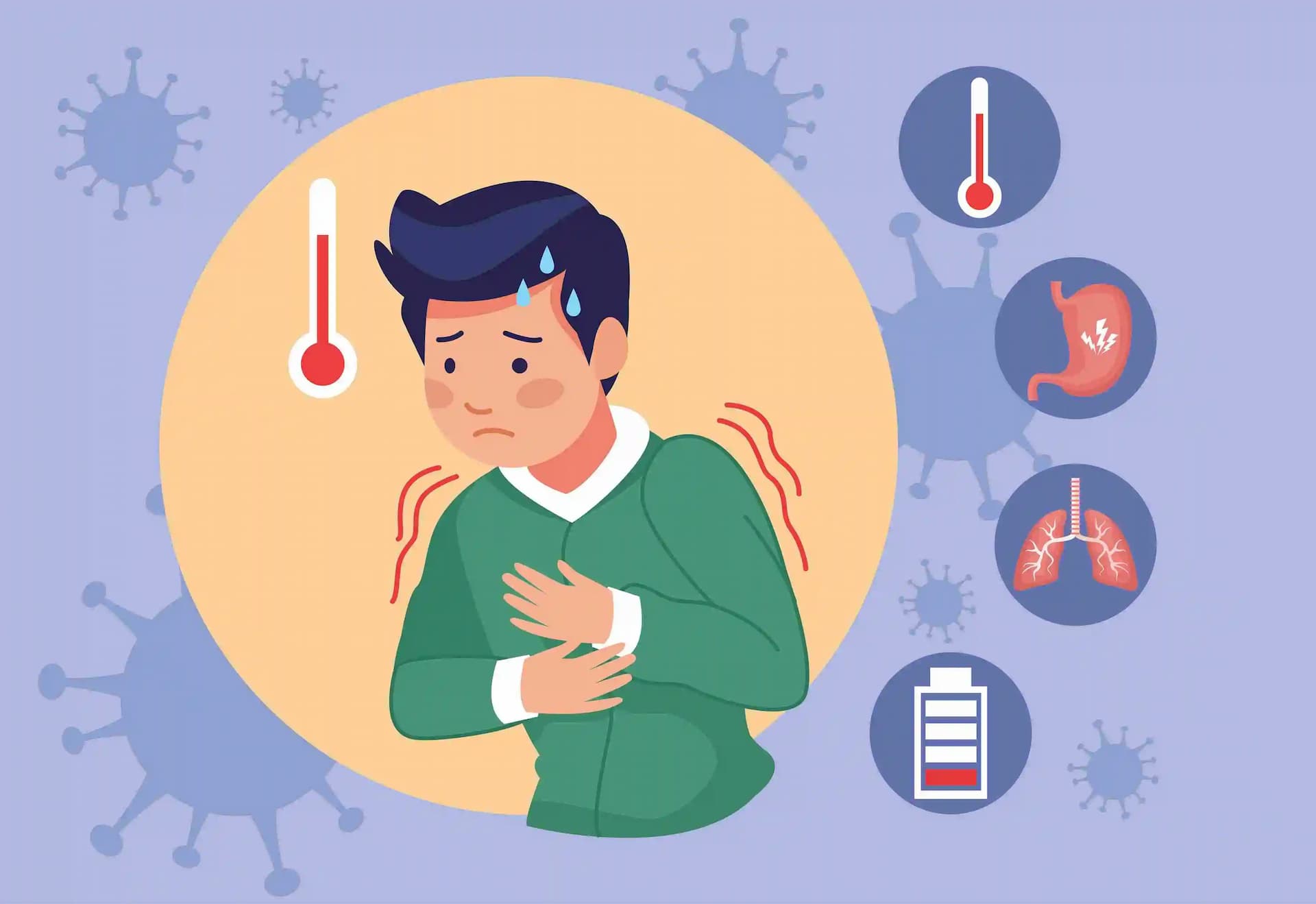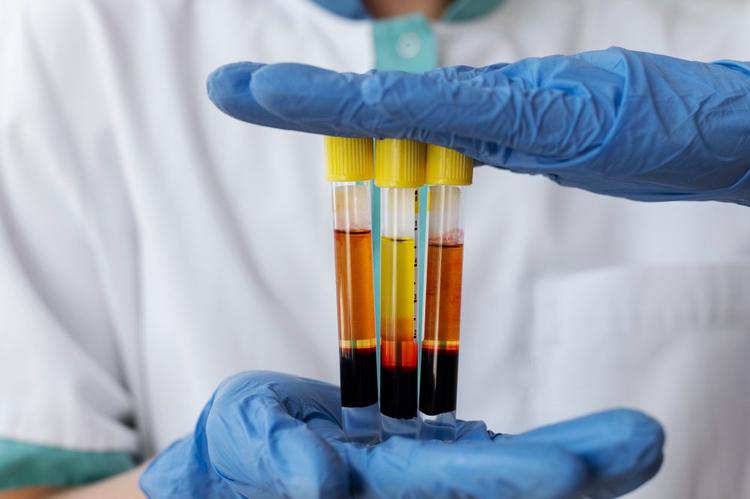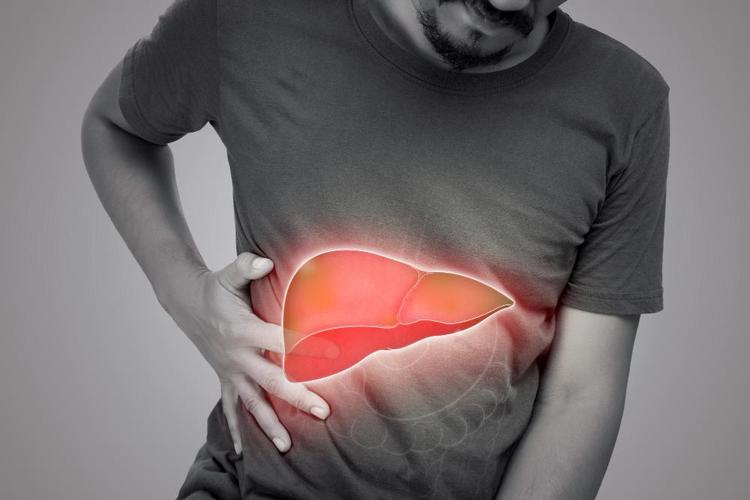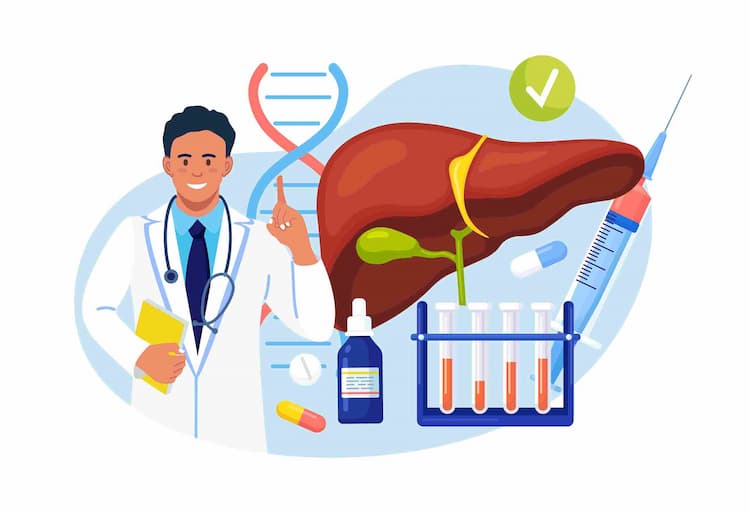What Is Jaundice? What Are The Causes, Diagnosis, And Treatment?

Medically Reviewed By
Dr Divya Rohra
Written By Meenakshi
on Jan 27, 2023
Last Edit Made By Meenakshi
on Mar 17, 2024

Jaundice refers to yellowing skin and pale eyes caused by a buildup of bilirubin in the blood. It can be a sign of various underlying conditions, and it's essential to be aware of the symptoms, causes, and treatment options available.
The condition affects millions of people worldwide, including in India. You might not know it, but jaundice is pretty common! According to the World Health Organization (WHO), jaundice is a leading cause of morbidity and mortality in developing countries. An estimated 60% of neonatal deaths in India are attributed to jaundice.
Jaundice can also happen to adults, and it can be caused by a variety of different things. The most common symptoms of jaundice are yellowing skin and eyes, dark urine, and frequent fatigue.
In this blog post, get to know what causes jaundice, the symptoms, and how to treat it. Also, you can get some tips to prevent jaundice.
So, keep reading, whether you're just curious about jaundice or worried that you might have it!
Understanding Jaundice
Jaundice is a condition that occurs when there is an excess of bilirubin in the blood. Bilirubin is a yellow pigment produced when red blood cells are broken down. The excess bilirubin causes the skin and whites of the eyes to appear yellow.
Jaundice can affect people of all ages and is typically caused by an underlying condition. The highest risk of developing jaundice is found in newborns and older adults.
Jaundice usually goes away on its own in newborn babies. However, it can sometimes become severe and lead to more significant complications.
Common Symptoms of jaundice
Symptoms of jaundice include yellowing skin and whites of the eyes, dark urine, and light-colored stool. Additionally, some people with jaundice may experience itching, fatigue, and abdominal pain.
Common symptoms of jaundice in infants include:
- Yellowing of the skin and whites of the eyes (sclera)
- Dark urine
- Pale-colored stools
- Extreme fussiness
- Irritability
- Loss of appetite
- Weight loss
In adults, common symptoms of jaundice include:
- Yellowing of the skin and whites of the eyes (sclera)
- Dark urine
- Pale-colored stools
- Fatigue
- Abdominal pain
- Itching (pruritus)
- Loss of appetite
- Weight loss
- Nausea or vomiting
Jaundice may also be accompanied by symptoms of the underlying condition that is causing it, such as fever, jaundice, and abdominal pain in case of liver disease, or pain in the right upper abdomen and fever in case of gallstones.
Causes of Jaundice
An excess of bilirubin in the blood causes jaundice. The excess bilirubin causes the skin and whites of the eyes to appear yellow.
There are several causes of jaundice, including:
- Liver disease (hepatitis, cirrhosis, and liver cancer)
- Gallstones
- Hemolytic anemia (a condition in which red blood cells are broken down more quickly than the liver can handle)
- Viral Hepatitis
- Blood cancer
- Autoimmune disorders
- Inherited disorders
- Excessive alcohol consumption
- Certain medications (antibiotics, antidepressants, and anti-seizure medications)
What are the Underlying Causes of Jaundice In Infants?
While jaundice is a common occurrence in newborns and typically goes away by the time a baby is 2 weeks old., it is essential to understand that underlying medical conditions can also cause jaundice in infants.
Such causes include:
- Immature liver: The newborn's liver may not be mature enough to handle the breakdown of bilirubin, leading to excess bilirubin in the blood.
- A premature baby is more likely than others to have jaundice.
- Breastfeeding: Some newborns may develop jaundice when they are fed breast milk
- Underactive thyroid gland
- Infections: Some infections, such as urinary tract infections or sepsis, can cause jaundice in newborns.
- Rh incompatibility: A condition where the mother is Rh-negative and the baby is Rh-positive, leading to the destruction of the baby's red blood cells.
- Blockage in the bile ducts and gallbladder.
- Has a different blood type from the mother.
What are the Various Diagnostic Methods for Jaundice?
Diagnostic tests for jaundice include a physical examination, blood tests, and imaging tests such as ultrasonography or CT scan.
Physical Examination:
A physical examination will check for signs of jaundice, such as yellowing of the skin and eyes.
Blood tests can measure the level of bilirubin in the blood, which can help to confirm a diagnosis of jaundice. Blood tests can also help to identify underlying conditions that may be causing jaundice, such as liver disease or hemolytic anemia.
Complete blood count (CBC) is a blood test commonly used to diagnose jaundice. CBC test measures the number of red blood cells, white blood cells, and platelets in the blood. The test result can help to identify underlying conditions that may be causing jaundice, such as anemia or a blood disorder.
Liver Function Tests (LFT):
These tests can check the function of the liver and help to identify underlying liver conditions or disorders that may be causing jaundice.
Imaging Tests:
Imaging tests such as ultrasonography or CT scan can help to identify underlying conditions that may be causing jaundice, such as gallstones or liver tumors.
It's worth noting that the specific diagnostic tests used will depend on the individual's symptoms and the cause of jaundice. A doctor will determine the best diagnostic approach based on your medical condition.
Treatments Options For Jaundice
Treatment for jaundice depends on the underlying cause and the person’s medical condition. In some cases, treatment may involve addressing the underlying condition, such as removing gallstones or treating a liver infection.
In other cases, treatment may involve managing symptoms and preventing complications. For example, if jaundice is caused by liver disease, treatment may include managing the underlying liver condition. If jaundice is caused by gallstones, treatment may involve removing the gallstones.
If jaundice is caused by a medication, treatment may involve switching to a different medication. In some cases, supportive care such as phototherapy, a treatment that uses light to break down bilirubin in the blood, may help the body clear bilirubin from the blood.
To Finish
In conclusion, jaundice can be caused by an excess of bilirubin in the blood, which leads to the yellowing of the skin and whites of the eyes. Jaundice is not a life-threatening disease; it can be easily managed with the proper care, early diagnosis, and treatment.
It's also essential to note that jaundice can be a symptom of a more serious underlying condition, and it is essential to seek medical attention if you suspect you have jaundice.
For reliable and affordable jaundice diagnosis, choose Redcliffe Labs. Our state-of-the-art, internationally recognized laboratory is equipped with trained experts and technologists to meet all testing needs. We offer a wide range of diagnostic tests, including blood tests and liver function tests, to help identify the underlying cause of jaundice. With our team of experts and state-of-the-art equipment, you get the most accurate and reliable results.
Remember, early diagnosis and treatment can help to prevent complications and ensure a full recovery.



